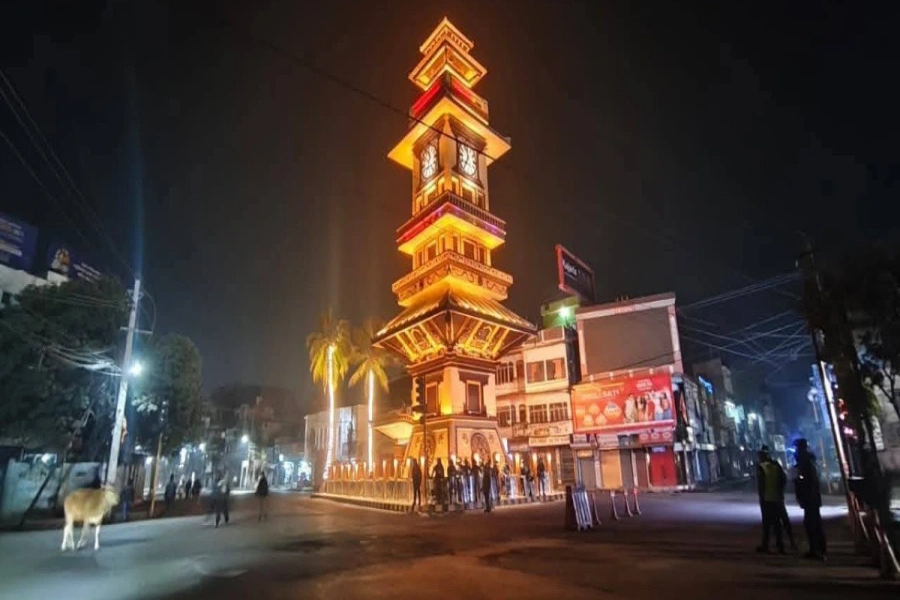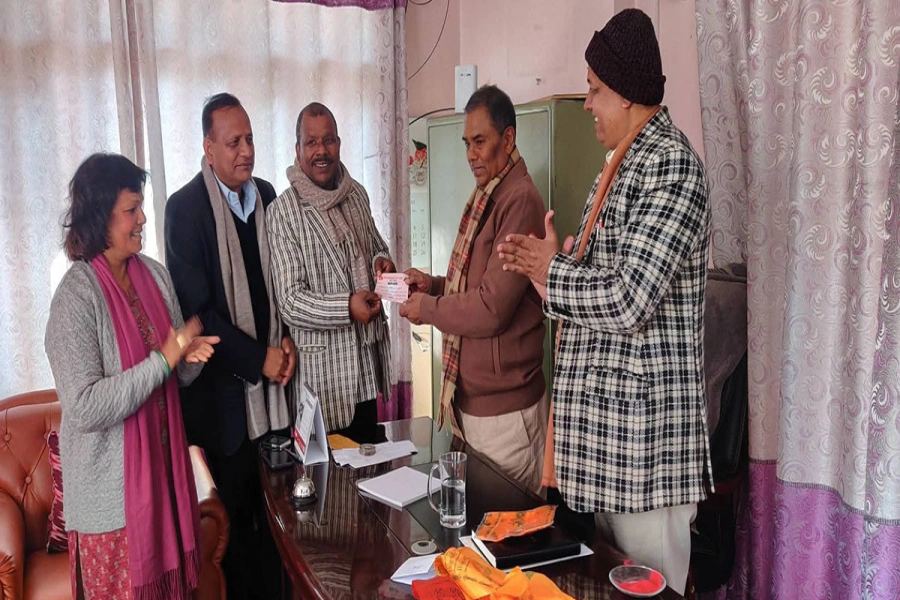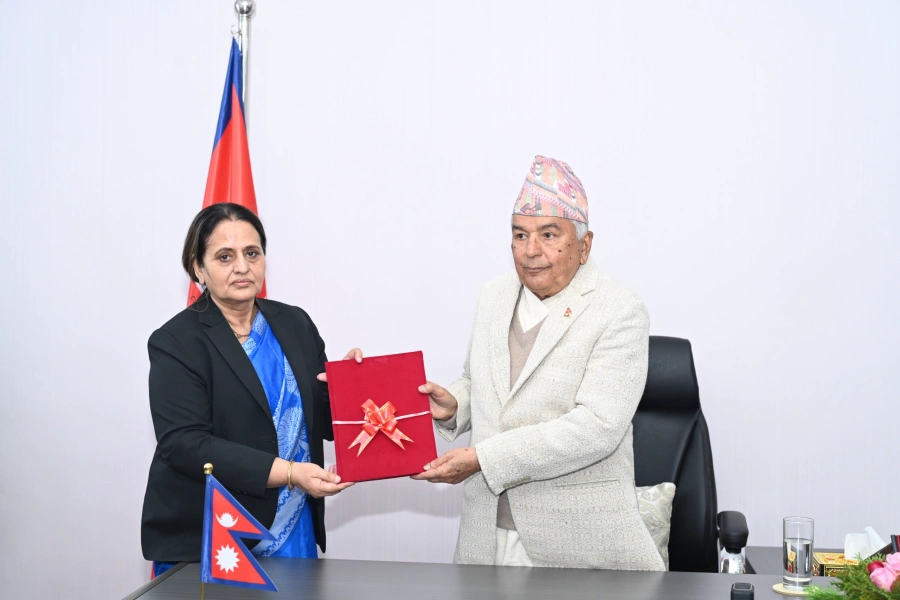KATHMANDU, Sept 6: Around 42,100 people die of the diseases caused by air pollution every year in Nepal. The Health Effects Institute Annual report of Global Air 2022 underscores the global increase in non-communicable diseases due to the effects of air pollution.
According to the data of the World Health Organization (WHO), Kathmandu ranks 96th among the most polluted cities in the world. Madhesh Province and Lumbini Province experience higher air pollution levels than the Kathmandu Valley itself.
Bhushan Tuladhar, an expert from the United Nations Development Commission on Clean Air, said that 7 million people die every year due to air pollution in the world.
Tuladhar said that there is more pollution here than in other provinces because most of the industries are in Madhesh Province. According to him, carbon dioxide, harmful gasses, and carcinogenic elements are present in air pollution particles. These small particles in the polluted air can penetrate all organs of the body through the bloodstream, primarily through inhalation via the lungs, leading to various types of diseases affecting multiple organs. Polluted air typically contains particles of Particulate Matter (PM)-2.5 size and it is easily inhaled through the lungs and reaches various parts of the body. But if the pollution contains PM-10 dust particles, it cannot enter through the nose.
According to experts, the average life expectancy of Nepalis has decreased by 4.6 years due to non-communicable diseases that are increasing due to the effects of air pollution. Due to the high level of air pollution in Madhesh Province, life expectancy has decreased by seven years, while in the Kathmandu Valley, it has decreased by 3.5 years.
According to the statistics of 2019, as many as 5,080 people die every year due to air pollution-related diseases in the Kathmandu Valley. It is estimated that 50 percent of lung cancer in the world is caused by pollution in non-smokers. "Lung cancer, which was normally seen after 60 years of age, is now occurring at 30 years of age," said Tuladhar.
Kathmandu tops global air pollution chart again

According to Awantika Priyadarshani, another UN Development Commission clean air expert, other diseases are increasing due to air pollution. According to her, air pollution affects the brain and causes dementia, stroke, Parkinson's, poor mental health, autism, neurodegeneration, and Alzheimer's disease.
Similarly, cardiac diseases include ischemic heart disease, high blood pressure, congestive heart, cardiac arrest, arrhythmia, cardiac arrest, etc. Lung cancer, respiratory diseases, chronic obstructive pulmonary disease (COPD) and asthma are on the rise due to air pollution.
Studies have shown that the effect of pollution is more on pregnant women, newborn babies, women, people living in polluted environments for a long time, people living in busy cities, traffic police, women cooking food on fire and children.
According to the study, women may suffer from anemia, infertility, miscarriage, gestational diabetes, low birth weight or stillbirth, premature menopause, mental illness, postpartum depression and other problems due to pollution.
Environmental activist and a doctor, Dr Anup Subedi explained the increased impact of air pollution on the vulnerable populations in the Terai and hilly regions.
He said, "The policymakers are not interested, the deprived people of Madhesh, the under-privileged groups of the cities and the traffic police are more affected," he said.
Priyadarshani said that children who have been exposed to a polluted environment for a long time will have mental effects, weak IQ, poor memory, affecting their overall educational ability. She says, "We fail to notice it, but children attending schools in polluted areas struggle to study," she said, although there have been studies and research on these issues in developed countries, they have not been done in Nepal yet. We don't care, but children attending schools in polluted areas struggle to study."
In other regions of the country, including major cities, the use of traditional fuels persists, leading to ongoing air pollution. Factors contributing to this pollution include vehicle emissions, the presence of older vehicles on the roads, sporadic fires, and the burning of garbage. Additionally, approximately 50 percent of households continue to rely on fuels like firewood for cooking. As a result, air pollution in Nepal continues to escalate, with experts noting a growing impact on public health.
Tuladhar says that even though the government in Nepal has been making plans and policies for air pollution at various times, due to negligence at the level of implementation, pollution has not been controlled.
"Even now, 30 percent of old vehicles in the city are emitting carbon emissions, but the government is not able to take strict measures," he said. He expressed his concern that even though it is possible to control pollution if every citizen and the government want to, the health of Nepalis is being put at risk due to the negligence of all of us.
Tuladhar suggests that pollution can be reduced by banning use of modern fuels for cooking, using electric stoves or LP gas, banning old vehicles, using alternative fuels in brick kilns, non-indiscriminate burning of agricultural straw, and banning burning garbage and emphasizing using electric vehicles.
Experts have given several pieces of advice to mitigate the risks of air pollution. They urged everyone to avoid smoking around pregnant women, newborn babies, elderly and sick people, protect pregnant women, children, elderly and sick people from the risk of air pollution. Experts refrains women from using firewood and coal and said to keep breastfeeding mothers and babies warm.
In addition to this, Tuladhar suggests that one should not go out of the house in the morning in the winter season, use a mask if you have to go out, if one walks out in the morning, consider doing them later in the day, after the sun has risen, to minimize exposure to high pollution levels.







































